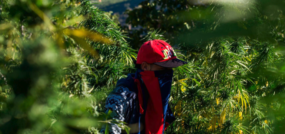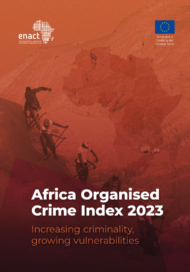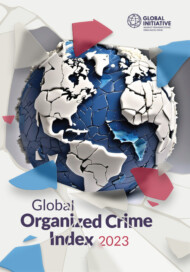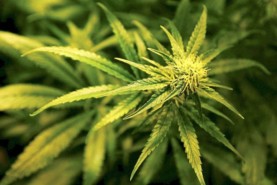Posted on 29 Apr 2025
For decades, Morocco has been one of the world’s largest producers of illicit cannabis. Cultivation is deeply woven into the social and economic fabric of the northern mountainous region of the Rif. For communities in remote and underserved areas, the crop has long provided a survival economy in the absence of viable alternatives. Building on this historical association, Morocco has undertaken policy reforms to transform the informal economy into a regulated, state-supervised industry. Although these efforts are an important step towards formalization, with a view to integrating Moroccan cannabis into global supply chains, implementation challenges highlight the complexities of regulating an entrenched informal economy.
In 2021, the government enacted Law 13-21, which legalized the cultivation of cannabis for medical, pharmaceutical and industrial purposes, while maintaining the prohibition on recreational use. In line with this legislative shift, Morocco created the National Agency for the Regulation of Activities relating to Cannabis (ANRAC) in 2022 to operationalize the law and oversee the transition.
ANRAC’s mandate encompasses the licensing, monitoring and regulation of cannabis-related activities, including the cultivation, processing, commercialization, export and import of cannabis seeds and products for legal use. In addition to overseeing compliance, the agency is tasked with promoting sustainable alternatives for communities dependent on illicit cannabis cultivation, and structuring the legal cannabis supply chain to meet national and international standards.
By the end of 2024, ANRAC had issued more than 3 300 authorizations for cannabis-related activities, including processing, seed import, transport and other logistical aspects of the supply chain. The agency also certified 7.6 million imported seeds and authorized the use of the Beldia variety, indigenous to the Rif region. In 2024, over 2 700 hectares of land were legally cultivated by farmers within the new regulated system, producing more than 4 000 tonnes of cannabis for legal purposes.
One of the most symbolic measures taken as part of the reform was announced in August 2024, when King Mohammed VI granted a royal pardon to over 4 800 people convicted, prosecuted or wanted in cases related to illegal cannabis cultivation. This act of clemency was widely seen as a reconciliatory gesture towards farmers in the Rif region, who had long been marginalized by prohibition-era enforcement. The pardon also reflects a strategic policy move to facilitate farmers’ transition from the illicit market into the legal economy without fear of legal reprisals. Further royal pardons are expected.
The implications are significant. By removing legal pressure on legacy growers, the state is lowering the threshold for entry into the formal sector, signalling a shift towards economic inclusion. It also offers a chance to rebuild trust among communities historically marked by tensions with state authorities. However, thousands of farmers and operators remain reluctant to come forward for fear of prosecution or confusion over the pardon’s scope. This suggests that reconciliation efforts must be paired with legal clarity and outreach to ensure wider community engagement.
A persistent shadow economy
Despite the developments, the transition remains fraught with challenges. While authorized cultivation has increased – from less than 300 hectares in 2023 to around 2 700 hectares in 2024, according to ANRAC – this is still only a fraction of Morocco’s total area of cannabis under cultivation, estimated at between 50 000 and 70 000 hectares. And the more than 3 000 licences issued in 2024 remain a modest figure compared with the estimated 400 000 or more people directly or indirectly participating in the illicit cannabis trade.
This illustrates the limited absorptive capacity of the legal market so far and raises concerns about its ability to displace the well-established informal economy. The current landscape is more one of coexistence of both markets than a decisive transition from one to the other. Most farmers remain outside of the regulatory framework, either because the legal requirements (such as seed certification, cooperative membership and mandatory traceability) are perceived as too costly or complex, or because they simply prefer to continue operating in the illicit sphere.
As a result, a substantial proportion of the population continue to rely on illicit cannabis networks for income generation, perpetuating the dynamics that the state is trying to reform. The resilience of the illicit market is also underpinned by higher demand and more established cannabis distribution networks. The illicit sector continues to offer more immediate liquidity and scale, making it a viable option for many.
In contrast, the legal market, while promising, has only just begun to develop commercial outlets. In 2024, Morocco exported a limited amount of low-THC cannabis resin to Switzerland, fetching prices of between €1 400 and €1 800 per kilogram. However, achievements such as these do not yet reflect a robust commercial ecosystem. ‘Since the law was passed and the agency [ANRAC] implemented it, licensed farmers have often reported difficulties engaging with cannabis processing facilities, leading to unmet expectations and economic uncertainty,’ according to a journalist we spoke to.
Concerns have also emerged about the potential for regulatory capture or misuse of the legal system. There is a risk that actors in the illicit market may seek to exploit the emerging regulatory framework, either by laundering illegally sourced cannabis through licensed operations or by using licences as a cover for continued trafficking.
Morocco’s drug policy reform measures reinforce the state’s recognition of cannabis as a legitimate agricultural product and its potential to capitalize on global markets. However, to truly support a transition from the informal to the regulated market, authorities should encourage broader participation through community-owned cooperatives and implement targeted incentives that deliver meaningful economic benefits to the thousands of families who have depended on this crop for generations.
This analysis is part of the GI-TOC’s series of articles delving into the results of the Global Organized Crime Index. The series explores the Index’s findings and their effects on policymaking, anti-organized crime measures and analyses from a thematic or regional perspective.



